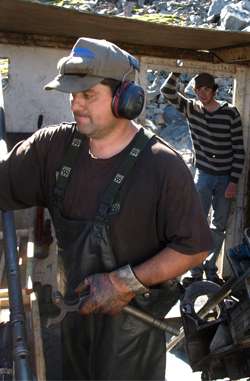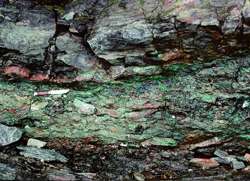Mining no shortcut for Greenland

The report, titled "For the Benefit of Greenland" and authored by a wide range of specialists making up the Committee for Greenlandic Mineral Resources to the Benefit of Society, concludes that, contrary to the hopes of many Greenlandic lawmakers, mineral and oil extraction is no shortcut for the country to obtain economic independence from the Kingdom of Denmark.
"Greenland faces some daunting economic challenges. And even though natural resource exploitation will become important for Greenland, it is not enough. Because of its economy and its demographics, Greenland will need to employ a range of different measures, and that includes a block grant for the foreseeable future," says Minik Rosing, Professor of Geology at the University of Copenhagen and the chairman of the University of Greenland.
The report praises Greenland for its efforts to regulate natural resource exploitation, and confirms that such activity could serve to help Greenland on its path to development.
However, the report also finds that Greenland's known mineral resource deposits are not large enough to serve as the country's sole additional source of income in addition to fisheries.
In order for Greenland to rely solely on mining, 12 "large scale" mines would need to be operational by 2040, with five such mines in operation at any one time. Currently there are six known major mineral deposits, making such a goal, in the opinion of the Committee, unrealistic. Even with that many mineral operations, it would still be impossible to end Greenland's reliance on the block grant.
Slow but steady wins the most

The report's authors suggest that permitting a limited number of mines, operational for a limited number of years, in a limited number of areas has the greatest potential benefit for Greenland.
The Committee looked at Greenland's ambitions of becoming a natural resource exporter and economic independence in a broad perspective, including such areas as: geology, environmental impacts, geo-politics, law, societal impacts and economy. The report contains five scenarios for Greenland's development and identifies 21 areas that Greenland must focus on if the country's natural resources are to benefit the country in the long term.
"As we see it, one possible way for Greenland to make the most of its natural resources would be to limit the number of mines and place them in carefully selected areas. All mines have undesired effects, but this would minimise their cultural and environmental impact," Rosing says.
"If Greenland were to rapidly develop a major natural resource industry, as current plans call for, it would need to recruit most of the labour abroad, which would prevent local residents from developing the skills required to take jobs in the industry. That would result in reduced societal benefits. Our opinion, therefore, is that a more cautious approach to development would be best," Rosing says and adds that should also focus on developing an industry unrelated to natural resource extraction in order to improve chances for economic development.
Natural resource wealth fund crucial
The report also concludes that establishment of a natural resource wealth fund could be decisive in ensuring self-sufficiency. Greenlandic law currently requires a portion of the income from natural resource exploitation to be set aside in a wealth fund as a way to help stabilise the economy. Such a fund, however, has yet to be established.
"Our conclusion is that a natural resource wealth fund is an absolute necessity. If work to establish such a fund does not begin in the near future, it will be difficult for Greenland to become economically self-sufficient. And, if all known natural resource deposits are exploited without any of the proceeds being set aside in a wealth fund, the country's national wealth would be squandered, leaving future generations with no way to provide for themselves," Rosing says.
The report will be presented to the public at the University of Greenland, in Nuuk, on Saturday, 25 January at 10am. The conclusions of the report will be debated during a public event at the University of Copenhagen, on Tuesday, 4 February at 11am.
About the report
Draws on information from many academic fields:
- Preceded by 10 background papers on the following topics: geology, environmental impact, previous mining operations in Greenland, mining operations in other countries, Asia, legal aspects, geo-politics, societal impact, commercial impact and economic impact
- Draws up five scenarios for Greenland's development: status quo, Greenland as a natural resource exporter, establishment of a natural resource wealth fund, a multi-pronged strategy and independence
- Concludes that Greenland would benefit most – economically, culturally and environmentally – if a strategy of permitting a limited number of mines, operational for a limited number of years, in a limited number of areas were followed
- Finds that establishing a natural resource wealth fund is crucial
- Identifies 21 areas that Greenland must focus on if the country's natural resources are to benefit the country in the long term
Provided by University of Copenhagen


















